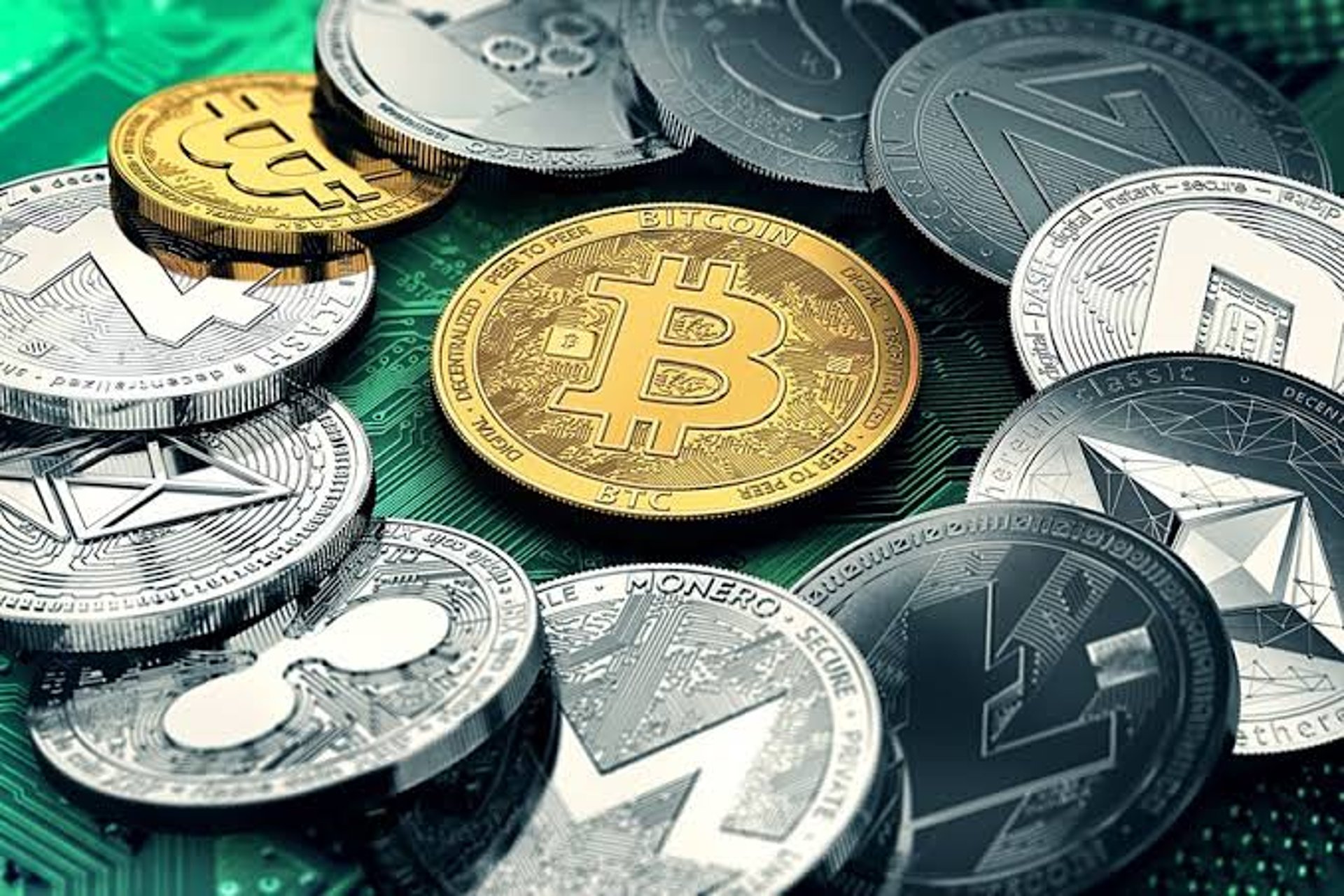
The Global Ascent of Digital Currencies: A Comprehensive Guide for International Audiences
Omar Martir
7 min read
Digital currencies, once a niche concept, have rapidly evolved into a pivotal force in the global financial landscape.
From decentralized cryptocurrencies to Central Bank Digital Currencies (CBDCs), the proliferation of digital money is fundamentally reshaping how we transact, invest, and perceive value worldwide.
This guide offers an in-depth look at this transformative trend, with a particular focus on its global impact and localized developments.
🌐 Understanding the Key Types of Digital Currencies
To grasp the current digital currency ecosystem, it's essential to differentiate between its primary forms.
🔗 Cryptocurrencies:
The Dawn of Decentralization
The journey of modern digital currencies began in 2008 with Bitcoin (BTC), introduced by the pseudonymous Satoshi Nakamoto.
Launched in 2009, Bitcoin pioneered decentralized digital money, operating on a peer-to-peer (P2P) network powered by blockchain technology.
A blockchain is an immutable, distributed ledger that records all transactions, ensuring security, transparency, and, critically, eliminating the need for traditional intermediaries like banks.
Bitcoin's core appeal was to create "P2P electronic cash" free from government or institutional control.
This ethos of decentralization and censorship resistance gained significant traction, especially after the 2008 financial crisis eroded trust in traditional financial systems.
Following Bitcoin's breakthrough, thousands of other cryptocurrencies, known as altcoins, emerged.
Notable examples include:
Ethereum (ETH): Launched in 2015, Ethereum expanded beyond simple digital currency, introducing smart contracts.
These self-executing programs on the blockchain paved the way for diverse decentralized applications (dApps), including gaming, Decentralized Finance (DeFi) platforms, and Non-Fungible Tokens (NFTs).
Ethereum's network has become a cornerstone of the broader crypto ecosystem.
Ripple (XRP): Designed to facilitate rapid and cost-effective cross-border payments for financial institutions.
Litecoin (LTC): Often dubbed "digital silver," it was engineered for faster transactions and a larger supply than Bitcoin.
Solana (SOL), Cardano (ADA), Polkadot (DOT): These newer blockchain generations aim to address the "blockchain trilemma" by offering enhanced scalability, security, and decentralization.
⚖️ Stablecoins:
Bridging Volatility with Stability
The inherent price volatility of cryptocurrencies like Bitcoin and Ethereum has hindered their widespread adoption as everyday payment methods.
This challenge led to the creation of stablecoins, cryptocurrencies whose value is pegged to more stable assets, such as fiat currencies (e.g., USD, EUR), commodities (e.g., gold), or asset baskets.
The most common stablecoins maintain a 1:1 peg to the US dollar. They generally fall into two categories:
Fiat-backed stablecoins: Examples include USDT (Tether), USDC (USD Coin), and BUSD (Binance USD), which are backed by equivalent reserves of real-world assets.
Algorithmic stablecoins: These aim to maintain their peg using complex algorithms and supply-and-demand mechanisms (though some, like UST, have dramatically failed, highlighting their associated risks).
Stablecoins are vital to the crypto ecosystem, acting as a bridge between traditional finance and DeFi.
They enable fast transactions without price volatility concerns and facilitate seamless access to DeFi services.
🏛️ Central Bank Digital Currencies (CBDCs):
The State's Digital Response
Given the growing popularity of cryptocurrencies and the global shift towards digital economies, central banks worldwide have begun exploring their own digital currencies—Central Bank Digital Currencies (CBDCs).
Unlike decentralized cryptocurrencies, CBDCs are centrally issued and controlled by a country's central bank, retaining the reliability and centralized nature of traditional fiat currency.
CBDCs typically come in two main forms:
Retail CBDC: Designed for general public use, functioning as a digital equivalent of physical cash but with the added benefits of digital transaction security and traceability.
Wholesale CBDC: Intended for use by financial institutions for interbank payments and large-value settlements, aiming to enhance the efficiency of existing payment systems.
The motivations driving CBDC development are diverse:
Payment System Modernization: Making transactions faster, cheaper, and more efficient.
Financial Inclusion: Providing access to financial services for unbanked populations.
Financial Stability: Ensuring the continued presence of central bank money in a potentially cashless future.
Innovation: Enabling new forms of programmable payments and integrating with emerging technologies.
Monetary Sovereignty: Maintaining control over monetary policy in an increasingly digitized world where private digital currencies might gain significant influence.
Countries such as the Bahamas (Sand Dollar) and Nigeria (eNaira) have already launched retail CBDCs.
China is extensively testing its Digital Yuan (e-CNY) in various cities.
The European Central Bank is exploring the Digital Euro, and the United States continues to debate the potential for a Digital Dollar.
📈 Global Impact of Digital Currencies
Digital currencies are driving significant transformations across multiple sectors:
✨ Financial Innovation and New Opportunities
Decentralized Finance (DeFi): An ecosystem of financial services built on blockchains (predominantly Ethereum) that replicates traditional banking functions—such as lending, insurance, and trading—without intermediaries.
This enables global access, lower fees, and enhanced transparency.
Non-Fungible Tokens (NFTs): Unique digital assets recorded on a blockchain, representing ownership of virtual or physical items like digital art, collectibles, and virtual real estate.
While initial hype has settled, NFTs continue to explore novel ownership and monetization models.
Cross-Border Payments: Cryptocurrencies and stablecoins offer faster and cheaper international transfers compared to traditional systems, benefiting remittances and global trade.
Micropayments: The ability to execute very small-value transactions with negligible fees opens new avenues for digital business models.
⚠️ Challenges and Risks
Despite their promise, digital currencies face several significant challenges:
Volatility: Cryptocurrencies, in particular, are known for extreme price fluctuations, making them high-risk investments and challenging their role as a stable medium of exchange.
For a comprehensive guide on investing wisely and understanding financial freedom, check out the Young Adults' Global Finance Guide: Invest and Achieve Financial Freedom.
Regulation: The absence of a consistent global regulatory framework creates uncertainty and can facilitate illicit activities like money laundering, terrorist financing, and tax evasion.
Governments and regulators worldwide are actively working to address these gaps.
Cybersecurity: The crypto space is prone to hacks, fraud, and scams.
The lack of consumer protection on many platforms and the irreversible nature of blockchain transactions can lead to devastating losses.
Environmental Impact: The energy consumption of certain cryptocurrency mining processes (especially Bitcoin's Proof of Work) raises environmental concerns.
Newer consensus mechanisms like Proof of Stake aim to mitigate this issue.
Digital Inclusion: While promising financial inclusion, accessing and understanding digital currencies still require a degree of digital literacy, which could exacerbate exclusion in some communities.
Learning to manage your personal finances and get out of debt can be a crucial first step toward financial literacy, as detailed in our Personal Finance Debt-Free Guide.
🌍 Regional Spotlights:
Digital Currency Initiatives Worldwide
🇺🇸🇨🇦 North America
United States: The Federal Reserve continues to research a potential Digital Dollar, evaluating its benefits and risks to the financial system. More information can be found on the Federal Reserve's CBDC page.
Canada: The Bank of Canada is actively researching and consulting on a potential digital Canadian dollar, focusing on its role in a digital economy.
Visit the Bank of Canada's digital currency page.
🇧🇷🇦🇷 South America
Brazil: Brazil is globally recognized for its innovative and proactive stance on digital currencies, featuring a vibrant crypto-asset market and an ambitious CBDC project.
Brazilian Regulation: Brazil has been one of the first countries to implement comprehensive regulations for the crypto-asset market.
The Legal Framework for Cryptocurrencies (Law nº 14.478/2022), enacted in December 2022, sets guidelines for virtual asset service providers and designates a regulatory authority.
You can find the official text of this law here: Lei nº 14.478/2022.
DREX: Brazil's National Digital Currency: Brazil's most ambitious digital currency initiative is DREX (formerly Digital Real), the Brazilian CBDC. More official information can be found on the Central Bank of Brazil's dedicated DREX page: DREX - Banco Central do Brasil.
Uruguay: The Central Bank of Uruguay has conducted a pilot program for an e-Peso, exploring its feasibility and implications.
🇪🇺🇬🇧 Europe
European Union: The European Central Bank is actively exploring the Digital Euro project, assessing its design and potential impact on the Eurozone.
Learn more at the European Central Bank's Digital Euro website.
United Kingdom: The Bank of England and HM Treasury are collaborating on a potential digital pound, focusing on its use cases and implications.
For updates, visit the Bank of England's digital currency page.
🇨🇳🇮🇳🇯🇵 Asia
China: The People's Bank of China is a frontrunner in CBDC development with its Digital Yuan (e-CNY), undergoing extensive pilot programs across various cities.
India: The Reserve Bank of India has launched pilot programs for its Digital Rupee (e₹), exploring both wholesale and retail segments.
Find information on the Reserve Bank of India's CBDC section.
Japan: The Bank of Japan is conducting experiments on a digital yen to ensure a robust payment system for the future.
See updates from the Bank of Japan on CBDC.
🇦🇺🇳🇿 Oceania
Australia: The Reserve Bank of Australia has undertaken research and a pilot program for a wholesale CBDC to explore its potential benefits.
More details are available on the Reserve Bank of Australia's CBDC page.
New Zealand: The Reserve Bank of New Zealand is exploring the future of money, including the potential role of a digital New Zealand dollar.
Consult their Future of Money work.
🔮 The Future of Digital Currencies:
Global Trends and Outlook
The digital currency landscape is in constant flux, with several trends poised to shape its future:
🤝 Integration with Traditional Finance
Expect increasing convergence between traditional finance (TradFi) and decentralized finance (DeFi).
Major banks and financial institutions are steadily exploring blockchain technology and digital assets, whether through crypto-asset custody, stablecoin issuance, or participation in CBDC initiatives.
The tokenization of real-world assets, such as real estate and securities, will be a crucial bridge in this integration.
To understand how successful investors strategize for profit and risk mitigation, dive into The Secret Strategy of Successful Investors: How Asset Diversification Can Maximize Your Profits and Minimize Risks.
🌐 Coordinated International Regulation
The need for harmonized international regulation is becoming ever more apparent.
As digital currencies transcend national borders, inconsistent regulatory approaches can lead to regulatory arbitrage and impede efforts to combat illicit activities. Organizations like the G20 and the Financial Stability Board (FSB) are actively working to develop global principles and standards.
♻️ Sustainability and Energy Efficiency
Concerns over the environmental impact of cryptocurrency mining will continue to drive the shift towards more energy-efficient consensus mechanisms, such as Proof of Stake, and the development of scaling solutions (Layer 2) that reduce energy consumption.
📱 Enhanced User Experience
For digital currencies to achieve mass adoption, the user experience must become significantly simpler and more intuitive.
User-friendly interfaces, robust digital wallet security, and the abstraction of blockchain's technical complexities will be essential.
Understanding the habits that lead to financial success can also guide your approach; explore insights on Millionaire Habits for Financial Freedom.
📈 Growth of the Stablecoin Market
Stablecoins will remain a fundamental pillar of the digital currency ecosystem, serving as a stable medium of exchange and an entry point to DeFi services.
Regulation for stablecoins, focusing on reserves and transparency, will be critical for their stability and widespread acceptance.
🌎 Expansion of CBDCs
More countries are expected to launch or advance their CBDC projects, exploring diverse models and use cases.
Interoperability between different CBDCs and existing payment systems will present a challenge but also an opportunity for more efficient cross-border payments.
✅ Conclusion:
A Digital Future Unfolding
Digital currencies represent one of the most profound transformations in the financial landscape since the advent of paper money.
Whether through decentralized cryptocurrencies challenging the status quo, stablecoins offering stability, or CBDCs issued by central banks to modernize systems, the digitization of money is an irreversible reality.
As technology matures and regulatory frameworks solidify, digital currencies hold the potential to democratize access to financial services, spur innovation, and redefine how money functions for billions worldwide.
However, challenges persist—from market volatility and security risks to the ongoing need for balanced and inclusive regulation.
Overcoming these hurdles will demand collaboration among governments, central banks, financial institutions, and the technology sector.
The journey of digital currencies is complex and compelling, promising a more connected, efficient, and undeniably digital financial future.
For more insights and content on financial freedom, be sure to follow our profile on Instagram:

